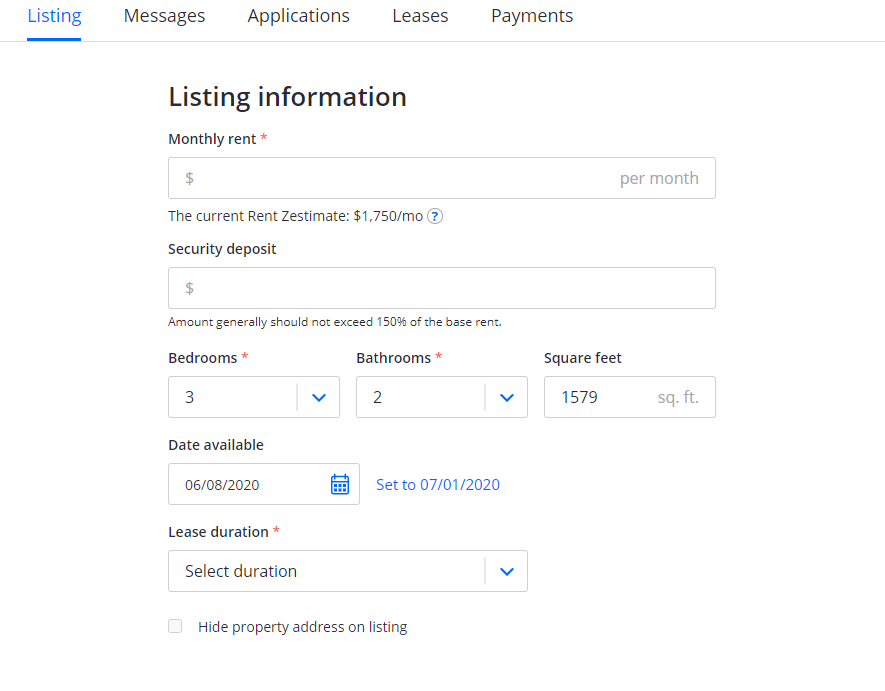
It is essential to maintain a clean and tidy yard at your rental property. A messy lawn can cause a negative impression on potential tenants and visitors. Overgrown lawns can also attract dangerous wildlife. Failure to care for your yard may result in expensive repairs or even fines from the municipal government.
The long-term benefits of maintaining a well-kept yard can outweigh the cost. Renters will pay more to live in a property with a well-kept lawn. A lawn adds value to the property and will be a benefit for the landlord.
Other than watering the lawn and mowing it, your tenant might have to fertilize, weed and mulch it. You may be asked to install an automatic or sprinkler system.

Although landlords and tenants might not agree about all details, it's worth making an effort to reach an agreement. While professional landscaping companies can be hired by landlords to take care their properties, the price can be high. It might be worth speaking with a local property manager about this topic. This way, you can find out about the latest techniques and best practices for the job.
Your landlord or property manager will be able to help you make this decision, as they have the information and experience necessary to do so. However, you must be clear on all aspects of your lease. This matter is also covered by the laws and ordinances within your state.
Typically, the simplest lawn maintenance solution is to use native plants. These plants are more resistant to pesticides and will survive in the local environment. You can enhance the look of your yard by adding a fence.
The best way to keep bugs away from your lawn is to keep it clean and clear of all debris. The grass will stay greener if it is well-watered. The potential for disease can also be minimized by keeping the area clean and free of weeds.

It might be a good idea to hire a professional to manage your rental properties if you have many tenants or multiple units. A professional company will have the right equipment, tools, and expertise to complete a job of high quality. You might even be able to get a lower rent to pay for these services.
It's a smart idea to research what average tenants expect from their rental property. A better understanding of your obligations can help you maintain your property and prevent costly damage.
Your chances of finding the right tenant will increase if your rental property is well maintained. Landlords are often looking for tenants who are willing to perform tasks beyond the regular chores. This can be achieved by taking a few moments to discuss your expectations and needs with a respected rental agency. You can improve the curb appeal of your home by adding new plants to your back and front yards.
FAQ
What qualifications are required to become a handyman
As a handyman, patience is the most important skill. Also, experience with working with electrical systems, carpentry skills and plumbing knowledge is essential.
You will find that there are many jobs available for those who are qualified, but if you don't know what they are, then you may not qualify.
You might want to consider getting training from a school specializing in these courses.
When is the right time to hire a handyman?
There is no right time to hire a handyman. You should get started as soon you can. You could save some money by waiting until after holidays. But you could also just pick up the phone and call around to different handymen.
What is the difference between a handyman and a carpenter?
Handymen can be hired to help with a variety of projects such as painting, plumbing and electrical installation, cabinet making, flooring, tile, kitchen remodeling, furniture assembly, and cabinet repair. Carpenters specialize in woodworking. They can build cabinets and walls, doors, windows or stairs.
Which is easier: contracting or being a handyman?
A handyman does not require as much resources as contracting. You only need to have your tools. You will need to be able manage your work and time, as contractors rely on subcontractors for most of their work.
Are you able to work as a handyman without a license?
Most states don't require a license in order to be an independent contractor, as opposed to a salaried employee. However, you will still need to meet certain conditions:
-
At least 18 years of age
-
A high school diploma or GED is required.
-
Complete a four-week course at a vocational school.
-
A background check is required by the Department of Licensing.
-
Annual registration requires payment of $20
You will also require a business license as well as workers' compensation insurance.
Statistics
- A franchise was approximately $110,000 with a franchise fee of $14,900, according to a spokesperson for a national handyman franchise. (en.wikipedia.org)
- An estimate was that in 2003, the market for home maintenance and repair spending was up 14% 2001 to 2003. (en.wikipedia.org)
- Mila keeps a commission of 20% for each completed service performed by Friends and charges various service fees regarding work done by Pros. (appjobs.com)
- “Once the pandemic hit, that number fell to about 20%.” (inquirer.com)
- According to the U.S. Bureau of Labor Statistics, in May 2020, there are 1,357,630 handymen employed in the U.S.. (angi.com)
External Links
How To
How to Replace a Broken Tile
Step 1: Remove the old tiles.
Take out the tiles and place them on a new flooring surface. If you plan to use these tiles later, it is important that you keep them in good condition. It's important to note which parts are missing or damaged in order to be able to find the right replacements.
Step 2 -- Choose New Tiles
Here are some options for tile repair.
-
Locate a replacement tile that is the same as the one you just removed.
-
To find the matching piece, use the measurements that you took while removing the tile. This allows you to easily find the perfect size without needing to measure again.
-
Look for various colors, patterns, textures, sizes, shapes, etc.
-
If you have a preference for grout, consider what it would be best to use. Some people prefer solid color; others enjoy mixing it up.
-
Make sure the tile you select is resistant to moisture.
-
The final thing to consider is the location of the tile. It will save you time and money if you make sure there's enough space for the proper installation.
-
After you've selected your tile, place your order online or at your local Lowe's shop.
Step 3 Install the new tiles.
For your new tiles, use the same method that you used to install them. It's important to align them correctly in order for them to fit together.
Step 4 - Clean up
Be sure to sweep up all debris from the floor before applying the final protective layer.
This will keep dust and dirt from getting into the grout between tiles, which could lead to mold.
Step 5 - Sand the Floor
After cleaning, sand the floors to remove any particles.
Step 6: Finish off
After the floor has been smoothed, you can apply protective coatings to the tiles. It is important to wait before you apply the protective coatings.
To protect your floors from stains, you can use "damp-and dry" products.
It will not address all problems that may arise once your tiles have been installed. For example, if you have a lot of kids running around, you may want to consider using an anti-slip coating on top of the protective layer.
Remember to let the protective sealer remain on for several additional weeks before you move into your home.